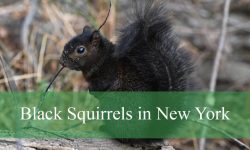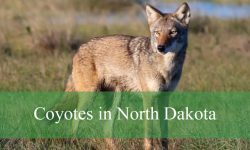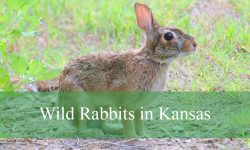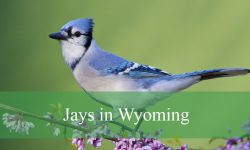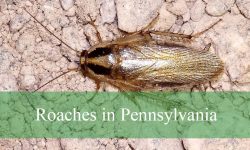Red squirrels bring life and color to Ohio’s forests and neighborhoods. With their striking reddish fur and lively demeanor, these small mammals are hard to miss, whether darting across tree branches or foraging on the forest floor. Their quick movements and alert behavior make them a captivating presence for wildlife enthusiasts.
Ohio’s varied landscapes—from dense woodlands to suburban parks—offer the perfect habitat for red squirrels to find food, shelter, and mates. Observing them up close unveils intriguing details about their habits, diet, and clever survival strategies that often go unnoticed in everyday encounters.
Red Squirrel Characteristics
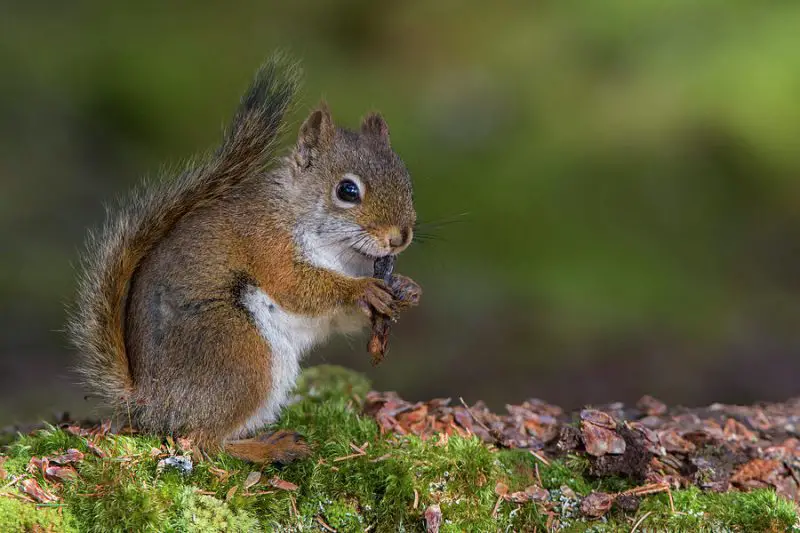
Red squirrels (Tamiasciurus hudsonicus) are easily distinguishable from other squirrel species due to their vibrant reddish-brown fur and smaller size. Unlike the larger gray squirrels that dominate many Ohio neighborhoods, red squirrels are typically about 7 to 9 inches in body length, with a bushy tail adding an additional 5 to 7 inches. They weigh between 5 and 10 ounces on average.
Their fur color can vary slightly depending on the season and geographical location, ranging from a deep mahogany to a lighter orange-red. A distinctive feature is the white or cream-colored underbelly, which contrasts sharply with the red of their back. Their pointed ears, often adorned with small tufts during the winter months, are another identifying trait that sets them apart from other tree squirrels.
Red squirrels also have sharp claws and strong hind legs, which enable them to climb trees with ease and leap significant distances between branches. Their keen eyesight and agile movements make them skilled navigators of Ohio’s forested habitats.
How to Identify Red Squirrels in Ohio
Red squirrels are smaller and more compact than the Eastern gray squirrels that share Ohio’s forests. One of the easiest ways to identify them is by observing their behavior and markings. Unlike gray squirrels, red squirrels are highly territorial and are frequently seen darting across tree branches, chattering loudly to ward off intruders.
They have a unique high-pitched vocalization, often described as a rapid “chip-chip-chip,” which serves as a warning to other squirrels and potential predators. Their tails are relatively shorter and bushier in proportion to their bodies compared to gray squirrels, and they often flick them while moving or communicating.
In Ohio, red squirrels are commonly found in coniferous or mixed forests, particularly where pine, spruce, and hemlock trees are abundant. These areas provide both shelter and an ample food supply, especially during the winter when they rely heavily on stored seeds.
Size and Physical Attributes
Red squirrels are small, energetic rodents whose size allows them to be exceptionally nimble. Adult red squirrels measure approximately 7 to 9 inches in body length, while their tails extend an additional 5 to 7 inches. Males and females are similar in size, though males may be slightly heavier in some regions.
They possess strong, sharp claws used for climbing trees and digging for buried food. Their large, dark eyes provide excellent vision, essential for spotting predators and navigating dense foliage. Their whiskers are highly sensitive and help them judge distances while leaping between branches.
The coloration of red squirrels can vary seasonally. Summer fur tends to be brighter and more vibrant, while winter coats become slightly duller and thicker for insulation. This seasonal adaptation helps them survive Ohio’s cold winters and blend into their forested surroundings.
Behavior and Daily Activities
Red squirrels are active, energetic, and highly territorial animals. They are most commonly seen during daylight hours, especially in the morning and late afternoon, though they can be active throughout the day. Unlike gray squirrels, which often share territories amicably, red squirrels fiercely defend their home ranges.
Territorial behavior includes chattering, tail flicking, and occasional physical confrontations. Red squirrels mark their territories with scent glands located beneath their chin and chest, which allows them to communicate boundaries to other squirrels.
These squirrels are solitary for much of the year, only coming together during the breeding season. Their nests, or dreys, are typically built high in trees, using twigs, leaves, moss, and fur. Ohio red squirrels may have multiple dreys within their territory, providing shelter and protection from predators.
Feeding Habits and Diet
Red squirrels are primarily herbivores, although their diet can be opportunistic. In Ohio, they feed extensively on seeds and nuts, especially from coniferous trees like pine and spruce. Acorns, hickory nuts, and beech nuts are also staples of their diet.
These squirrels are known for their habit of caching, or storing, food for the winter. They hide seeds and nuts in small holes or crevices, a behavior known as “scatter hoarding.” This not only provides a food reserve but also aids in forest regeneration, as some of the cached seeds germinate into new trees.
Red squirrels also consume berries, fungi, and occasionally insects or bird eggs. Their adaptability in diet allows them to survive in various habitats across Ohio, from dense forests to urban areas where bird feeders and ornamental trees provide supplemental food sources.
Predators and Survival Strategies
Red squirrels face several natural predators in Ohio. Common threats include hawks, owls, snakes, and domestic cats. They are also vulnerable to foxes and weasels that can infiltrate their nests.
To avoid predation, red squirrels rely on their agility and alertness. They often emit warning calls to alert others of danger and are quick to retreat to tree hollows or dense branches. Their small size and nimbleness make them difficult targets, and their bright coloration can sometimes blend surprisingly well with autumn foliage.
Another survival strategy involves their caching behavior. By storing food in multiple locations, red squirrels ensure they have resources even if one cache is discovered by a competitor or predator.
Reproduction and Life Cycle
Red squirrels breed twice a year, typically in late winter and again in summer. Females construct secure dreys to give birth, often lining the nest with soft materials like moss, leaves, and fur. Litters usually consist of 2 to 7 young, which are born blind and helpless.
The young remain in the nest for about 6 to 7 weeks, during which time the mother nurses them and teaches essential survival skills. Once they are old enough to leave the nest, juvenile squirrels disperse to establish their own territories.
In the wild, red squirrels generally live for 3 to 5 years, though some may survive longer in areas with abundant food and minimal predation. Their reproductive strategies and territorial behavior help maintain stable populations across Ohio.
Where to Spot Red Squirrels in Ohio
Red squirrels inhabit a variety of environments throughout Ohio. They are most commonly found in coniferous and mixed forests, where pine, spruce, and hemlock trees are plentiful. These areas provide ample food and nesting sites.
Urban parks and suburban backyards with mature trees also attract red squirrels. Bird feeders, nut-bearing trees, and shrubs make these areas ideal for foraging. Hocking Hills State Park, Cuyahoga Valley National Park, and Wayne National Forest are well-known locations where red squirrels are frequently observed.
Observers should look for active squirrels darting across branches or foraging on the forest floor. Their loud chattering calls and quick movements make them easier to spot than one might expect.
Fun Facts About Red Squirrels
Red squirrels have several fascinating traits that make them unique among Ohio’s wildlife. Despite their small size, they are highly territorial and vocal, using an impressive array of calls to communicate.
One interesting fact is their tendency to mimic the calls of predators. This behavior can confuse other squirrels or warn them of nearby danger. Red squirrels are also excellent seed dispersers, contributing to forest regeneration through their caching habits.
In addition, their agility allows them to perform acrobatic leaps between trees, sometimes covering distances of up to 10 feet in a single bound. Their alertness, intelligence, and energy make them a captivating species to study and observe in the wild.
Red Squirrels and Human Interaction
In Ohio, red squirrels often coexist with humans without causing significant conflict. They can sometimes be seen raiding bird feeders, prompting homeowners to take measures to protect their food. Using squirrel-proof feeders or placing feeders in open areas can help reduce these interactions.
While they are not considered pests, their energetic nature and curiosity may occasionally lead them into attics or sheds. It is important to use humane methods if removal is necessary, as red squirrels play an essential role in local ecosystems.
Education about these animals helps foster appreciation and encourages coexistence between humans and wildlife. Ohio residents often enjoy observing red squirrels and photographing their antics in natural and urban settings.
Seasonal Behavior and Adaptations
Red squirrels adapt to seasonal changes in Ohio with remarkable efficiency. In winter, they rely heavily on cached food and develop thicker fur to withstand cold temperatures. Their activity may decrease slightly, but they remain alert and foraging throughout the season.
During spring and summer, red squirrels are highly active, engaging in mating, territorial defense, and food gathering. The warmer months also provide an abundance of nuts, seeds, and berries, enabling them to build up reserves for the harsher winter months.
This seasonal adaptability ensures the survival of red squirrels across Ohio, despite fluctuations in food availability and weather conditions.
Conservation Status and Population Trends
Red squirrels are not currently considered endangered or threatened in Ohio. Their populations are stable, thanks in part to their adaptability and ability to thrive in various habitats. However, habitat loss due to deforestation or urban expansion can impact local populations.
Conservation efforts, including maintaining forested areas and minimizing human-wildlife conflicts, help ensure that red squirrels continue to flourish. Their role in seed dispersal and forest ecology highlights their importance in Ohio’s natural landscapes.
Conclusion
Red squirrels in Ohio are more than just charming woodland creatures. Their vibrant fur, energetic behavior, and fascinating adaptations make them a unique species worth studying and observing. From their territorial antics to their role in forest regeneration, red squirrels offer valuable insights into the delicate balance of Ohio’s ecosystems.
Whether seen darting through the trees in a state park or foraging near a backyard bird feeder, red squirrels are a delightful and integral part of Ohio’s wildlife. By learning more about their characteristics, behavior, and habitats, residents and visitors alike can gain a deeper appreciation for these remarkable small mammals.
FAQs About Red Squirrels in Ohio
What do red squirrels eat in Ohio?
Red squirrels primarily eat seeds and nuts, particularly from pine, spruce, and oak trees. They also consume berries, fungi, and occasionally insects.
Where are red squirrels commonly found in Ohio?
They are most commonly found in coniferous and mixed forests, as well as urban parks and suburban areas with mature trees.
How can you identify a red squirrel?
Red squirrels are smaller than gray squirrels, with reddish fur, white underbellies, bushy tails, pointed ears, and high-pitched chattering calls.
Are red squirrels aggressive?
Yes, red squirrels are highly territorial and may chase away other squirrels or intruders within their home range.
Do red squirrels help the environment?
Absolutely. Their caching behavior helps disperse seeds, contributing to forest regeneration and maintaining healthy ecosystems.

